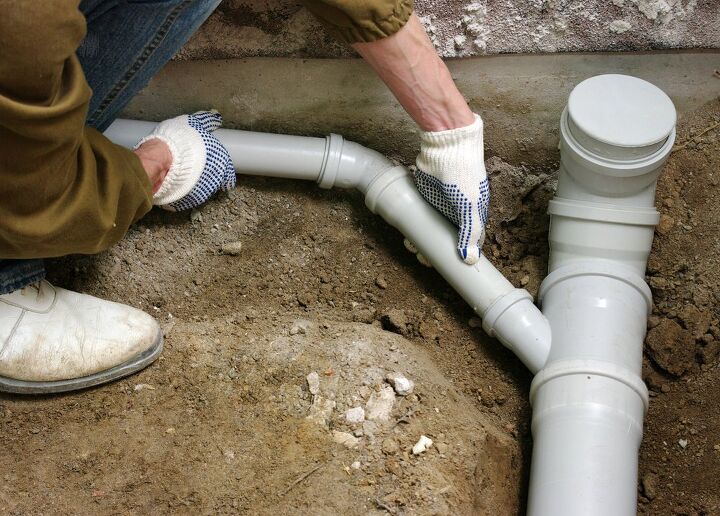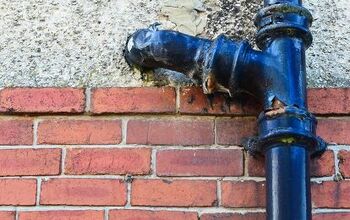Green Sewer Pipe Vs. White: What Are The Major Differences?

Modern plumbing is as advanced as it has ever been, and that makes it hard to wrap your head around. The color of a particular pipe may simply seem cosmetic, but it signifies its purpose and certain properties. So, what is the difference between green and white sewer pipes?
Green sewer pipes are used to connect a home to a sewer system or septic tank and cannot withstand pressure. They are less durable than white sewer pipes which are 3 times thicker and can be pressured. The walls of white sewer pipes measure 0.216” and are less susceptible to leaks, cracks, and damage from tree roots.
Density means everything when it comes to sewer pipes and it determines how durable it is. How deep you bury sewer pipes makes all the difference as far as eliminating risk factors such as tree roots. Follow along as we settle the important debate: green sewer pipe vs. white.
Do You Need a Sewer Installation or Repair Contractor?
Get free, zero-commitment quotes from pro contractors near you.

Green Sewer Pipe Vs. White
Green and white sewer pipes vary in usage, density, durability, and how well they can withstand pressure. The thickness of the walls also varies between green and white sewer pipes, and that helps determine their durability. Let’s take a look at the difference between green and white sewer pipes.
Green Sewer Pipe
You most commonly find green sewer pipes in residential areas and commercial buildings or lots. Professionals refer to green sewer pipes as 3034 pipes, and they are made out of PVC. Green 3034 sewer pipes are light and thin which leaves them susceptible to damage from pressure and tree roots.
You cannot use green sewer pipes with a gravity-fed sewer system because they aren’t durable enough. Green sewer pipes are not meant to withstand pressure like a drain waste vent. Plumbers install green sewer pipes to connect a home to the sewer system.
You can also run green sewer pipes to a septic tank because it is not pressurized. Some homes also have green PVC pipes in their front yard that serves as the main water shutoff valve for a sprinkler system.
White Sewer Pipe
White sewer pipes are made of PVC and are more durable than green sewer pipes. The main difference between green and white sewer pipes is that white pipes are thicker and you can pressurize them. This makes white sewer pipes useful for more practical uses than green pipes.
The extra durability is because white sewer pipes are 3 times thicker than green pipes, so they can withstand internal and external pressure. You only need to bury white sewer pipes 12” deep and they are much less likely to crack, leak, or suffer tree root damage. Each wall of a white sewer pipe measures 0.216” thick and that explains why they can withstand such pressure.
What Are White Sewer Pipes Used For?
White PVC pipe is the most popular type of pipe used for sewer and plumbing applications. This type of pipe is flexible yet strong and can withstand high PSI. Most commonly, Schedule 30 or Schedule 40 pipe is used in both residential and commercial applications.
The Schedule denotation on a pipe refers to the thickness of the pipe walls. A Schedule 30 pipe wall is usually about .277 inches thick, while a Schedule 40 pipe wall is usually about .322 inches thick. The thicker the wall and the more narrow the interior diameter, the higher the PSI the pipe can handle.
Cost
Pricing sewer pipe for your next job can help influence the type of sewer pipe you purchase and the cost of your overall project. Although the green sewer pipe or 3034 pipe is not as strong as the white PVC pipe, it usually comes with a higher price tag.
Expect to pay about $16 for a 10-foot section of 3034 green sewer pipe, 4 inches in diameter. Comparatively, the same size piece of PVC pipe with the same diameter will be about $13 for schedule 40 thickness.
Can I Use Green Sewer Pipe for Interior Applications?
Many people will tackle home DIY projects when it comes to plumbing and may be tempted to purchase the green sewer pipe for interior applications. Due to the thin walls and the overall fragility of this material, green sewer pipe, or 3034 pipe, should not be used for interior applications.
Instead, the standard for interior applications is white PVC pipe. Either a Schedule 40 or a Schedule 30 pipe will work for interior use. Not only is PVC pipe more durable, able to withstand higher PSI, but it is also long-lived, flexible, and easy to work with material for interior plumbing.
What Does a Green Pipe with White Letters Mean?
Sometimes homeowners will encounter a different type of pipe near or around their house. This pipe will be green with white lettering printed on it. This particular type of pipe is used to denote potable water. The water that goes through a green line with white lettering is usually used for cooling, feeding boilers, or water going to sinks or drinking fountains.
Is Green or White Pipe Better?
Both green and white pipes are commonly used in sewer applications for both residential and commercial buildings. It is very common to see green sewer pipes of a 3-inch diameter, referred to as 3034 pipe, used in sewer applications. However, this pipe is very delicate and can often not withstand high PSI or high external pressures.
Using a white pipe, of at least a Schedule 40 is always recommended if you are given a choice. Comparing the wall thickness between a green 3034 pipe and a PVC pipe will show that the white PVC pipe is nearly three times as thick as the green and is lightweight. Further, the white PVC pipe is more flexible and is cheaper too.
Can You Drive Over a Green Sewer Pipe?
Although green sewer pipe is generally more delicate than white PVC pipe, it is possible to drive over the pipe as long as it is buried. The soil packed around the pipe should be enough to keep the pipe protected from possible bending, cracking, or breaking.
The pipe should be buried at least a foot into the ground, but burying a green sewer pipe 24 inches is always preferred. Having the pipe deeper in the ground means the soil packed around the pipe can better distribute the impact of the car’s weight driving over the top.
Can You Drive Over White Sewer Pipe?
Many plumbers and DIY homeowners prefer to use traditional white PVC pipe because it is incredibly strong and durable. This pipe can withstand internal pressures from pressurized water systems and withstand external pressures as well. It is possible to drive over buried PVC pipe if the pipe is properly buried. Compared to the green sewer pipe, you only need to bury your PVC about 12 inches deep to ensure it will remain protected from cracking, bending, or breaking.
Do You Need a Sewer Installation or Repair Contractor?
Get free, zero-commitment quotes from pro contractors near you.

Related Articles

We are a team of passionate homeowners, home improvement pros, and DIY enthusiasts who enjoy sharing home improvement, housekeeping, decorating, and more with other homeowners! Whether you're looking for a step-by-step guide on fixing an appliance or the cost of installing a fence, we've here to help.
More by Upgraded Home Team



























